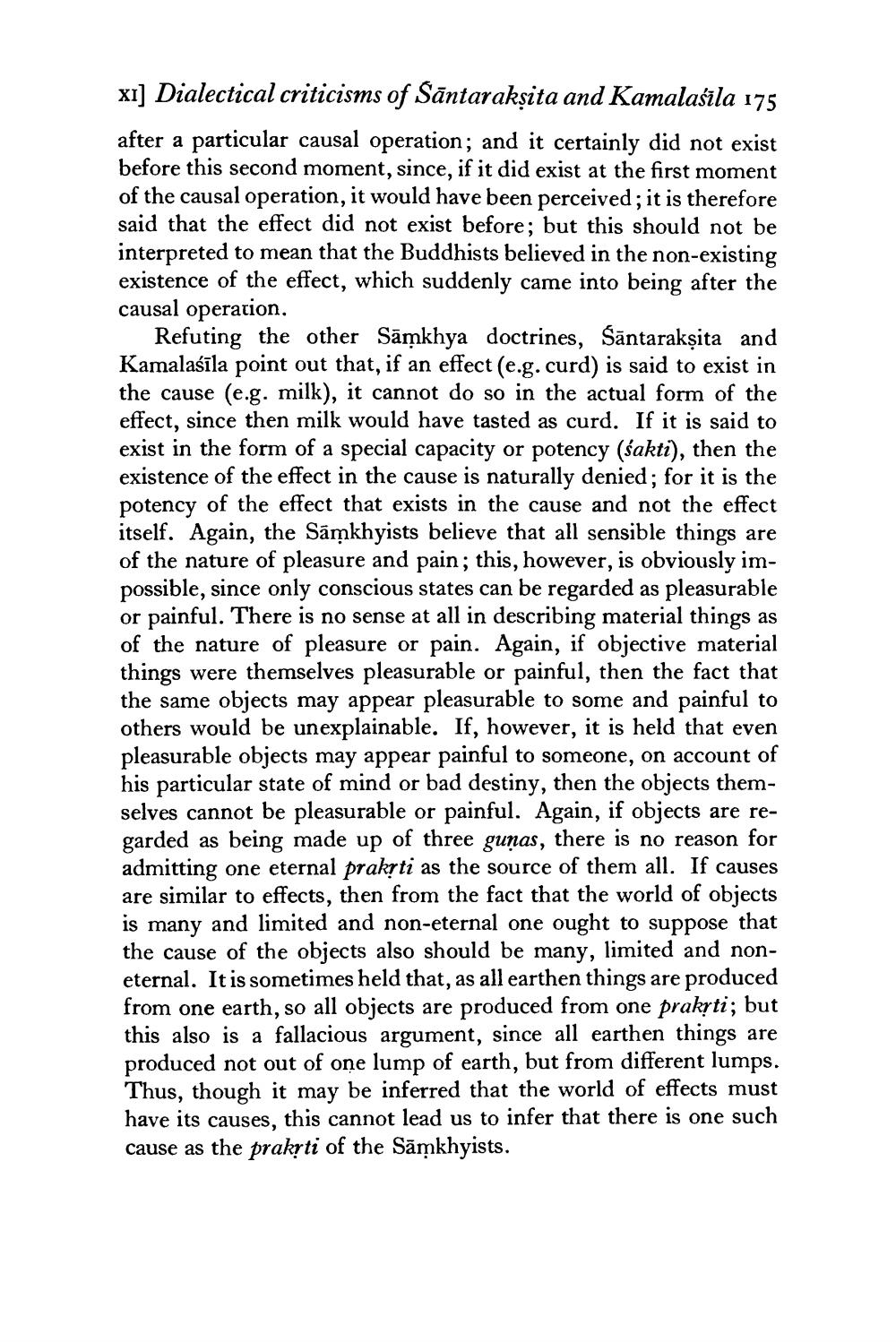________________
xi] Dialectical criticisms of Sāntarakṣita and Kamalašīla 175 after a particular causal operation; and it certainly did not exist before this second moment, since, if it did exist at the first moment of the causal operation, it would have been perceived; it is therefore said that the effect did not exist before; but this should not be interpreted to mean that the Buddhists believed in the non-existing existence of the effect, which suddenly came into being after the causal operation,
Refuting the other Sāņkhya doctrines, Sāntarakṣita and Kamalasīla point out that, if an effect (e.g.curd) is said to exist in the cause (e.g. milk), it cannot do so in the actual form of the effect, since then milk would have tasted as curd. If it is said to exist in the form of a special capacity or potency (sakti), then the existence of the effect in the cause is naturally denied; for it is the potency of the effect that exists in the cause and not the effect itself. Again, the Sámkhyists believe that all sensible things are of the nature of pleasure and pain; this, however, is obviously impossible, since only conscious states can be regarded as pleasurable or painful. There is no sense at all in describing material things as of the nature of pleasure or pain. Again, if objective material things were themselves pleasurable or painful, then the fact that the same objects may appear pleasurable to some and painful to others would be unexplainable. If, however, it is held that even pleasurable objects may appear painful to someone, on account of his particular state of mind or bad destiny, then the objects themselves cannot be pleasurable or painful. Again, if objects are regarded as being made up of three guņas, there is no reason for admitting one eternal prakrti as the source of them all. If causes are similar to effects, then from the fact that the world of objects is many and limited and non-eternal one ought to suppose that the cause of the objects also should be many, limited and noneternal. It is sometimes held that, as all earthen things are produced from one earth, so all objects are produced from one prakyti; but this also is a fallacious argument, since all earthen things are produced not out of one lump of earth, but from different lumps. Thus, though it may be inferred that the world of effects must have its causes, this cannot lead us to infer that there is one such cause as the prakyti of the Sāmkhyists.




